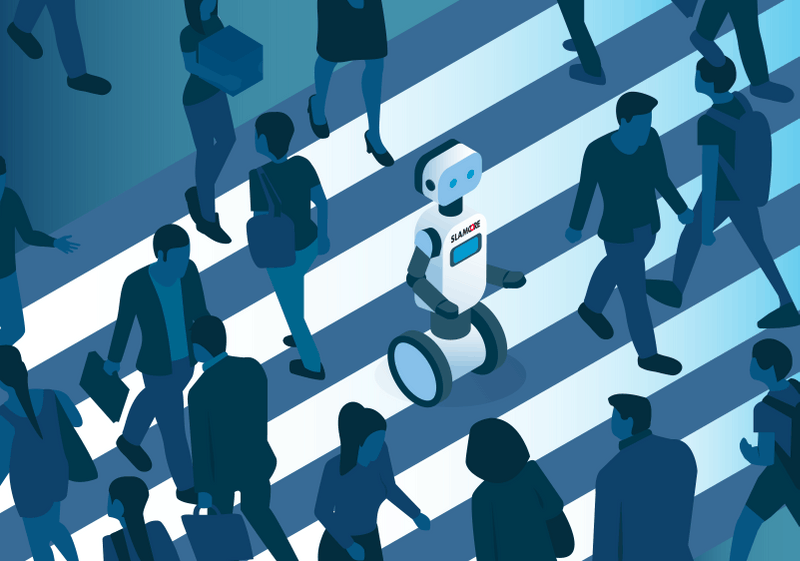
The vast majority of autonomous robots operating today work well in controlled, planned and stable environments. The cleaning and disinfecting robots, delivery bots and warehouse automation we’ve seen take off as a result of COVID-19 measures do a great job. But they are restricted to highly structured environments in which a small number of parameters can be calculated and acted upon. Unfortunately, the real world is far more complex and chaotic. For a true revolution that would see robots taking on a broad range of tasks and working alongside people in many different environments, new ways need to be found to allow robots to work safely and efficiently in the chaotic ‘human’ world.
Visual SLAM as the foundation
It is unlikely that any one developer, robotics firm or customer will solve this complex problem in all domains in a timely and commercially viable fashion. Collaboration is the way forward.
Vision-based SLAM systems enable robots to operate in dynamic, fast-changing environments. Cameras provide rich data feeds providing all the information a robot needs to build a map of the space it is in, track its position in that space and identify the objects around it. Using this data, our algorithms allow any type of mobile robot to locate its position in real-time – fundamental to successfully navigating new and unfamiliar spaces and is the key foundation for operating in complex environments.
The world’s most advanced neural-network
SLAMcore’s visual algorithms also enable any robot to self-monitor and identify when situations are becoming ‘too chaotic’, i.e. when it encounters situations, or combinations of events that it has not previously experienced or if the robot gets itself completely lost. Knowing when it is overwhelmed means the robot can immediately call for assistance from the world’s most impressive neural-network – the human brain. Information from the robot can automatically alert a remote human pilot to take control. Thanks to the SLAMcore vision-based systems that pilot can ‘see’ exactly what the robot sees in full colour – just as if they were there using their own eyes – and act accordingly.
Acceleration for the industry
To be commercially viable, and to safely work alongside and among people, robots must be able to handle a mind-boggling array of potential scenarios. AI and machine learning are rapidly advancing, but still too many robotics companies are needlessly struggling to get robots from A to B safely instead of innovating the things they could be doing when they get there. SLAMcore Spatial Intelligence software works with standard, off the shelf components, including the type of cameras commonly found in smartphones, and runs on low-cost, low-power processors. It provides a high quality but easy to implement solution that can be integrated into virtually any mobile robot design. Developers can drastically reduce time to market whilst focussing on the core capabilities of their solutions.
Adding software infrastructure that allows robots to be monitored and controlled in real-time by human pilots when needed significantly reduces cost and time to value from automation. Our goal at SLAMcore is to democratize access to cutting edge location, mapping and perception services that will accelerate the work of other robotics businesses. Our solutions are designed to work across a broad range of robot types and in multiple scenarios and can be up and running in minutes. As such they are easily partnered with the growing number of organizations creating software solutions that enable rapid human intervention and control of individual robots or fleets.
More robots for good, faster
The Covid-19 pandemic has increased interest in robots as solutions across many different industries and for many different tasks. The industry has reacted and demonstrated the huge potential of robots for good. But, too many individual robotics companies are struggling in isolation to solve complex ‘edge-case’ scenarios and are slowing potential adoption and undermining commercial cases trying to solve issues that have already been solved. Vision-based positioning with humans in the loop offers a ready-made solution that can short-cut this process and we are keen to work with any company that can help robot developers see their products delivering value sooner. For information please get in touch
